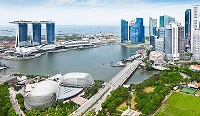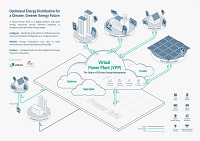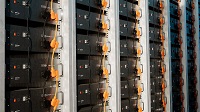Singapore’s small size and lack of natural resources makes harnessing renewable energy challenging. But did you know that we are home to the world’s largest floating solar farm and Southeast Asia’s largest energy storage system (ESS)?
The solar farm is the size of 45 soccer fields and can generate 60 megawatts (MW) — enough to power about 1,600 four-bedroom flats for a year. The ESS has a storage capacity of 285 megawatt hours (MWh), which can meet the needs of 24,000 four-bedroom flats for one day on a single discharge.
Clean Energy Roles in Demand
One of the biggest perks of joining the clean energy sector is working on game-changing projects like these, Trinette Low, Principal Analyst with the Industry Ecosystem Development Department at the Energy Market Authority shared.
She said: “Those in the energy sector have a front-row seat to witness how Singapore is exploring innovative technologies to overcome our natural constraints and achieve our energy transition goal. They will have the opportunity to make an impact on Singapore’s efforts in mitigating climate change.”
According to the Energy Sector Manpower Survey 2022 by EMA, the clean energy sector workforce is expected to increase by 80% to around 2,700 by 2032. Based on her research with clean energy sector stakeholders, Trinette shared that the increase in technical workforce employment will be driven by two key sectors: solar power and ESS.
Sectors That Power Up For the Green Economy
Trinette explained that as more solar and ESS projects are deployed, the demand for talent who can design, manage the implementation, operate and maintain these projects will also increase.
Project Managers will be highly sought after for the solar sector. “Project management is crucial for the solar sector because we need to deploy photovoltaic panels fast to meet our solar targets under the Singapore Energy Transition plan. This requires people who can drive the implementation of projects from start to finish, from development and procurement to construction and installation, and working with multiple stakeholders to ensure that the project is completed on schedule, within budget, and in compliance with regulatory and safety requirements,” she said.
She added that the project managers would require technical skills such as solar engineering, site surveying as well as soft skills such as stakeholder management and interpersonal communication.
For the ESS sector, workers who can operate and maintain ESS, which have been deployed, will be in demand.
“As more distributed energy resources (including solar) get connected to the power grid, more ESS will be needed to stabilise power demand and supply. We’ll need people who can ensure the proper day-to-day operation and maintenance of the ESS systems, which includes monitoring the performance of ESS batteries, conducting inspections, troubleshooting issues, and performing preventive and corrective maintenance activities.”
Trinette also revealed that solar and ESS companies leverage digitalisation and Internet of Things (IoT) solutions to help monitor and optimise their assets. This will increase the need for individuals with IoT and software development skills and domain knowledge in the energy sector to design and develop such solutions.
Upskilling For the Future
This raises the question: How does one enter this growing sector? The path is relatively straightforward for students who have just completed their studies. To get a technical job in the clean energy sector, a background in relevant engineering disciplines, such as electrical, mechanical, power, or chemical engineering, is most desired. ITE and polytechnic students who are pursuing such studies can also consider applying the Energy-Industry Scholarship, which provides benefits such as tuition fee funding and allowances, hands-on experience from industrial attachments and eventual employment with the sponsoring organisation upon completion of studies.
As for existing workers in the energy sector, they can equip themselves with new skills through Continuing Education and Training (CET) courses offered by the Singapore Institute of Power and Gas (SIPG), Sustainable Energy Association of Singapore (SEAS) and Institutes of Higher Learning (IHLs). Courses covered include those in solar, ESS, smart grids, and low-carbon alternatives.
Trinette’s advice to those keen to join the energy sector? Seize the opportunity to grow in an industry that will witness exciting changes ahead. “Now is the time to make an impact on climate change and write Singapore’s energy story yourself,” she concluded.



















